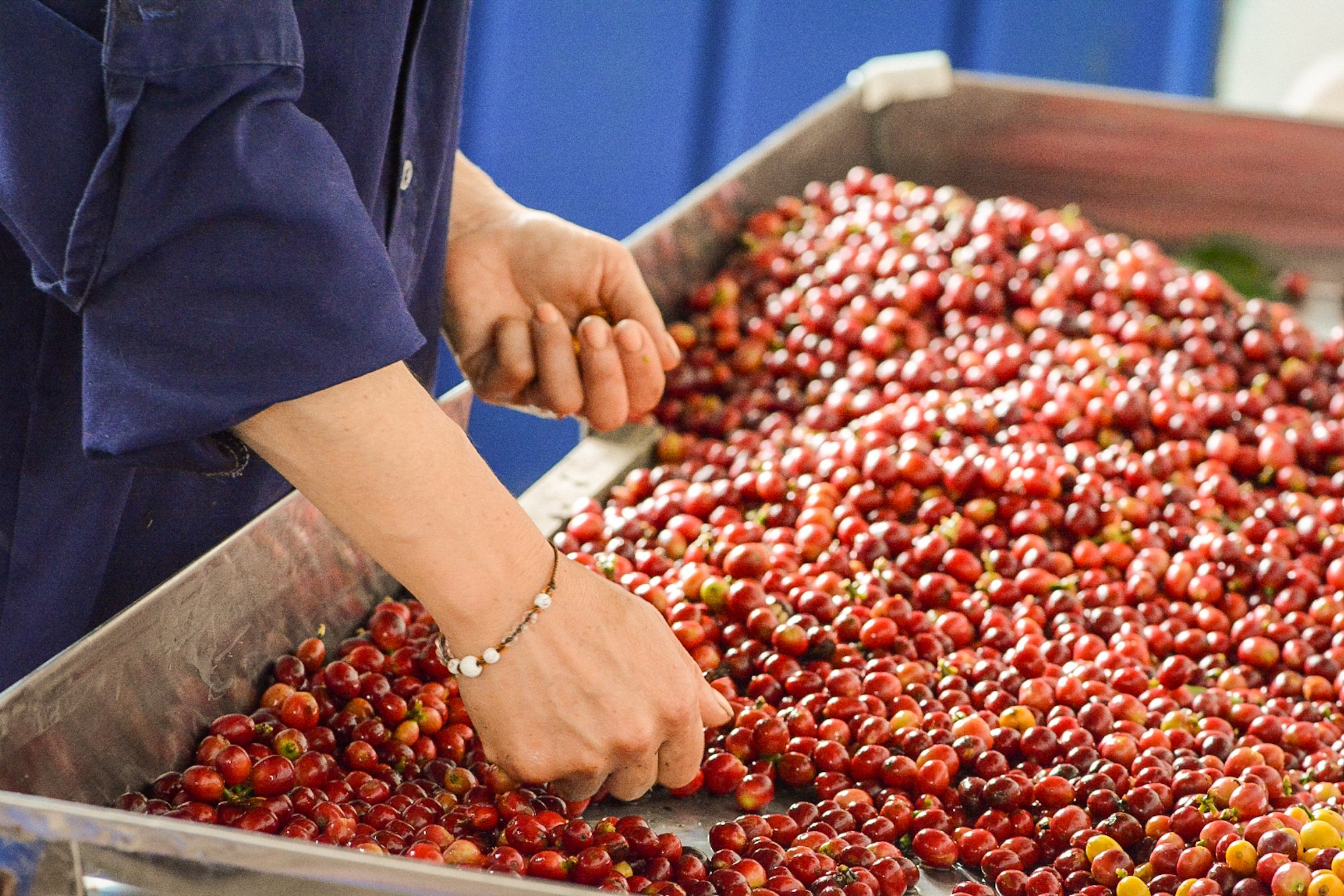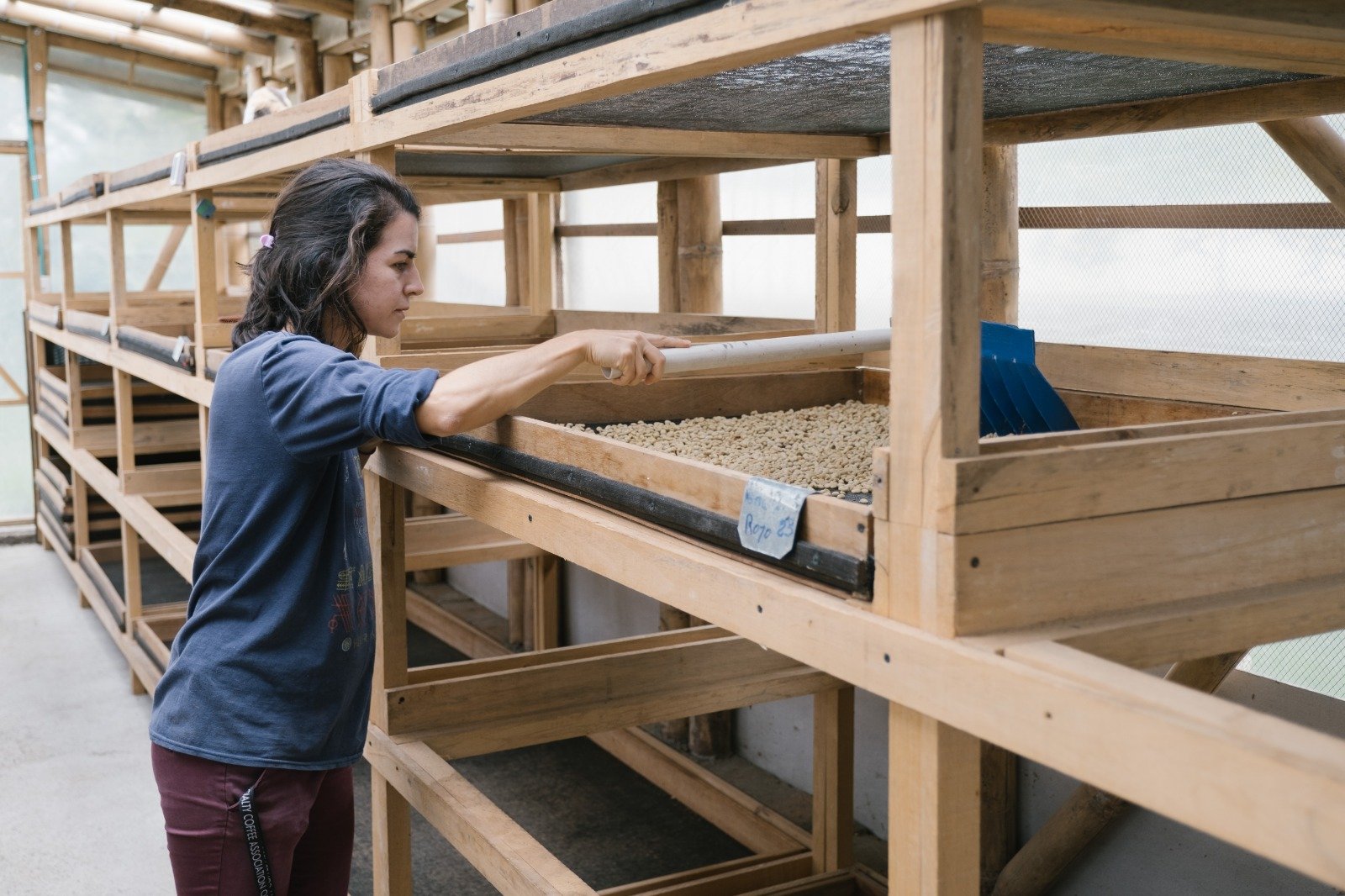From Coffee Cherries to Coffee Parchment
Most coffee farms process their coffee cherries on site. This means they have to go through a series of steps to get the picked coffee fruit to a dried and stable state for storage and transportation. Most business and cooperatives in Colombia only buy the coffee in parchment from the farmers. The parchment is a thin layer that protects the green coffee bean. During the milling process the parchment is removed and the beans are ready to be roasted.
Coffee in Parchment
So how do the farmers transform the cherries in to parchment?
The most common practice in Colombia is called a washed process. At La Floresta coffee farm we have implemented a few extra steps that help us guarantee the highest possible quality. Our pickers are trained to only pick the perfectly ripe cherries which tend to be a dark burgundy in color for our red varieties and a peachy orange color for our yellow varieties. The cherries are then submerged in water in order to separate them by density. The cherries that did not develop a healthy seed, or have been partially eaten by the coffee bean borer, or are too ripe will float. These cherries will be separated and processed with the lower quality coffee. Next they go through a hand selection process for ripeness and color. Here we separate our yellow beans from our red beans which come from different coffee plant varieties. These cherries then have their outer skin or pulp removed by a machine and go straight in to a plastic bin which is left sealed until the next morning.
Between the skin and the parchment there is a layer of sweet mucilage. This mucilage decomposes overnight and allows us to wash it away in the morning so that only the parchment is left to dry around the green coffee seed. Most coffee producing regions in Colombia are located in highly humid climates making coffee drying quite difficult. Removing all excess moisture from the seed simplifies the drying process for farmers and helps reduce molding.
The drying process for coffee depends on the infrastructure each farm has available. Most small farmers dry their coffee in the sun on large wood or concrete beds that can be covered in case of rain. We built our coffee drying room with movable African beds made of wood frames and plastic netting. The drying process can take anywhere from two days to one month. We like to ensure a stable and slow drying process of 15 days.
Once the coffee has reached a humidity of 10 % to 12 % it can be stored and roasted.




